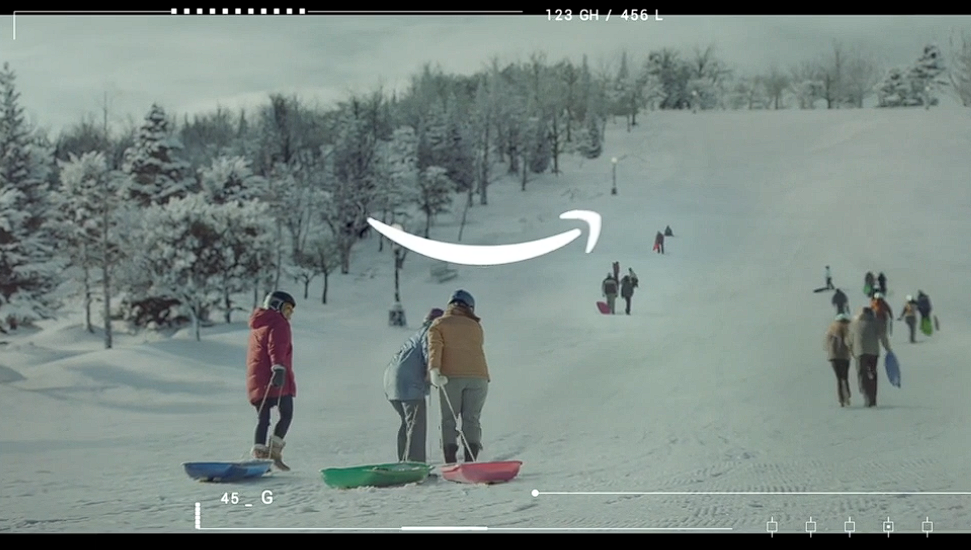Amazon has brought back one of its most beloved campaigns, “Joy Ride,” rekindling a story that has long resonated with audiences for its warmth, nostalgia, and celebration of simple, human connections. The revival marks a poignant return to an ad that beautifully encapsulates friendship, freedom, and the small moments of happiness that define life—many of which are made possible by the everyday convenience of Amazon.
Originally cherished for its emotional storytelling and universal appeal, “Joy Ride” follows three elderly friends who, driven by a spontaneous sense of adventure, relive their youthful days by taking a scooter out for a ride through familiar streets. What makes the film special is not just its narrative, but the way it portrays joy as timeless—something that transcends age, routine, and even time itself. The film captures an unfiltered sense of happiness found in life’s smallest gestures, a sentiment that continues to strike a chord with audiences of all generations.
In the revived version, Amazon stays true to the original spirit of the ad while updating its narrative for today’s audience. The film once again shines a spotlight on companionship and nostalgia, reminding viewers how simple acts of kindness and connection can spark immense joy. At its core, it celebrates how Amazon plays a quiet yet powerful role in people’s lives—facilitating those small but meaningful moments that bring people together.
The “Joy Ride” story seamlessly blends emotional storytelling with brand purpose. It reinforces Amazon’s positioning as a brand that doesn’t just deliver products but helps deliver happiness. By enabling people to access what they need—quickly, conveniently, and reliably—the company becomes part of countless unseen stories of love, care, and shared experiences that shape everyday life.
What makes this campaign especially memorable is its emotional authenticity. Instead of leaning on overt branding or exaggerated messaging, “Joy Ride” relies on human connection to do the talking. The understated performance of its characters, the soft background score, and the gentle pacing of the narrative create an atmosphere that feels deeply personal yet universally relatable. It’s a story about friendship, about revisiting the past, and about realizing that joy never really fades—it just changes form.
Advertising experts and audiences alike have praised “Joy Ride” for its subtle storytelling and emotional depth. The revival is being seen as a masterstroke of brand communication—one that aligns perfectly with the growing consumer appetite for content that feels real, meaningful, and rooted in emotion rather than persuasion. In a digital landscape crowded with noise, “Joy Ride” stands out as a reminder that simplicity, when done well, can leave the strongest impact.
The decision to bring back this iconic campaign also underscores Amazon’s long-term commitment to storytelling that goes beyond commerce. Over the years, the brand has consistently tapped into themes of family, connection, and community—creating an emotional bridge between convenience and care. By revisiting “Joy Ride”, Amazon not only honors its creative legacy but also reminds audiences of the values that have long defined its communication: empathy, accessibility, and joy.
The film has already begun to generate a wave of nostalgic reactions on social media, with viewers sharing memories of the original campaign and expressing appreciation for its return. Many have lauded Amazon for recognizing the emotional power of continuity—reviving a story that evokes both familiarity and freshness.
Through “Joy Ride,” Amazon once again positions itself not merely as a facilitator of modern life but as a quiet enabler of happiness. It’s not about the grand gestures or the big purchases—it’s about the little moments made special by the ease and simplicity the brand provides. Whether it’s ordering a small accessory, a gift, or something that helps fulfill a spontaneous plan, Amazon becomes part of stories that bring people closer.
In today’s fast-paced world, where technology often feels impersonal, “Joy Ride” stands out as a heartwarming reminder that even digital platforms can foster genuine human connections. It reinforces the idea that joy isn’t bound by time, age, or circumstance—it lives in the small, everyday moments that remind us of who we are and who we share our lives with.
By reviving “Joy Ride,” Amazon has done more than bring back a successful ad—it has reignited a feeling. A feeling that joy is ageless, friendship is forever, and sometimes, the best journeys are the ones that take us back to where it all began.
Discover more from Creative Brands
Subscribe to get the latest posts sent to your email.






